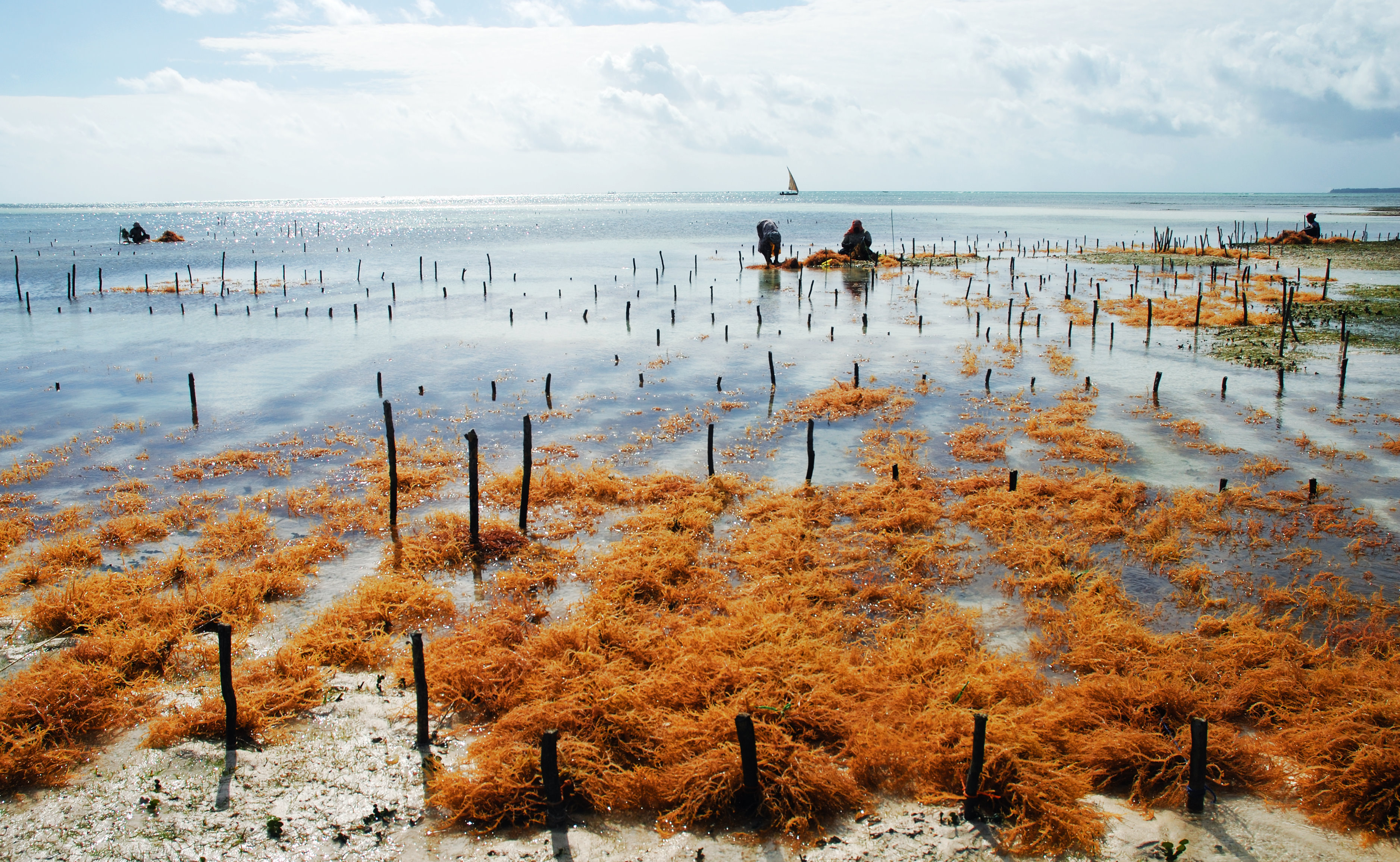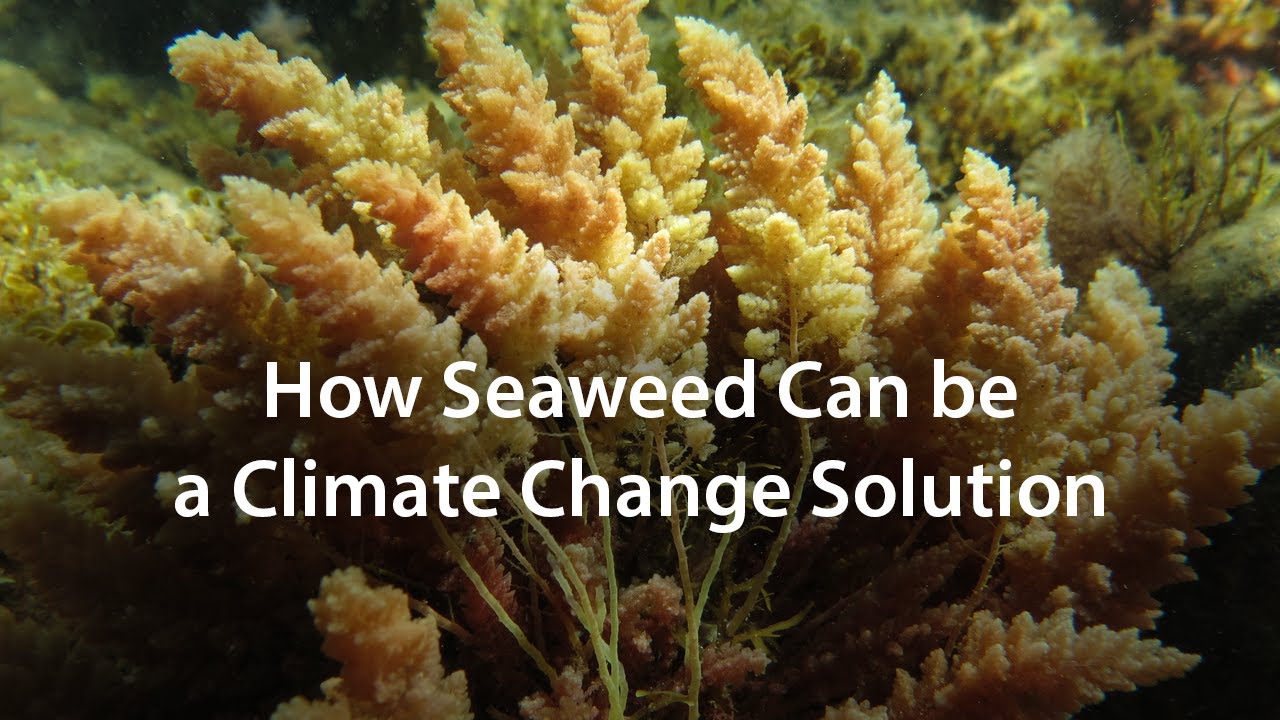Can A Massive Seaweed Farming Mitigate Climate Change?
Scientists believe that carbon capture will be essential to preventing global warming since lowering global emissions is unlikely to be sufficient So, seaweed farming mitigate climate change. However, the extent and effectiveness of carbon capture programs to date have been small.
Author:Suleman ShahReviewer:Han JuOct 19, 2022931 Shares155.1K Views

A vast seaweed farm floats in the South Atlantic between Africa and South America. It is the size of Croatia. Located in a natural ocean eddy, it removes a billion tons of carbon from the air each year and deposits it safely on the ocean bottom. According to BBC, a British entrepreneur hopes to launch this by 2026.
Scientists believe that carbon capture will be essential to preventing global warming since lowering global emissions is unlikely to be sufficient So, seaweed farming mitigate climate change. However, the extent and effectiveness of carbon capture programs to date have been small.
They need to be risky, expansive, and financially appealing to succeed. John Auckland, a successful businessman, thinks he has such a plan. Floating sargassum has "wonderful characteristics," according to him, and he wants to make use of them.
He is sure that his Seafields floating farm would be able to remove enough carbon dioxide from the air to slow climate changeand give its sponsors money in the form of carbon credits.
What Is Seaweed Farming Project?
At 55,000 square kilometers (21,200 square miles), Auckland is ambitious. It would need to be enormous to make a difference in the fifty gigatonnes of carbon dioxide we release into the sky each year. The yearly goal of the Auckland mega-farm is one gigatonne, which is one billion tonnes.
The initiative is based on the concepts of marine scientist Professor Victor Smetacek and is now conducting road tests in the Caribbean and Mexico. He is the "Scientific Founder" of Seafields and has been interested in the possibility of growing seaweed in the vast, revolving ocean currents called gyres for quite some time.
They accumulate all sorts of things in the center, he explains. Of course, the most recognizable examples are the plastic trash that is piling up in the heart of the subtropical gyres. In the same manner, Seafields hopes to contain its sargassum harvest in the same manner as these massive eddies contain islands of floating garbage.
For John Auckland, the gyre only prevents the sargassum from dispersing elsewhere. If we provide the proper environment, it will flourish. Any that manage to get away from our farm will eventually starve to death or stop developing. "
You better believe he's correct. Sargassum has been a major problem for the Caribbean's tourist economy for many years. The decaying matter emits a putrid odor as it reaches the shore. Definitely not the place to lay down on a towel and chill out.
That said, Seafields is certain that will not happen with its seaweed. It orders that anybody who manages to get away from the farm should be denied access to the nutrients the crew planned to extract from the ocean floor.
Surface water trapped in gyres is exceedingly salty and deficient in nutrients because of evaporation from the subtropical heat pounding down on it all day. For this reason, Prof. Smetacek describes gyres as "the seas'.
But when the deserts slowly flip, they float over a cooler, nutrient-rich ocean layer that the professor hopes to bring to the surface in order to support the sargassum.
“„If you were to link the nutrient-rich, deep water with pipelines and bring that water up from the bottom and let it warm up, then it would flow up on its own and continue flowing forever.- Prof. Smetacek
Seaweed Farming Reality
The oceans, which make up 71% of the Earth's surface, are a huge heat and carbon dioxide sink. It's becoming warmer and sourer while doing a terrific job of lowering global temperatures.
The fast-growing, long-lived maritime plants known as seaweed are excellent at absorbing and storing carbon. One study found that half of the carbon on the ocean bottom is due to seaweed. Much of the carbon might remain in the sea for hundreds of years or more.
Through photosynthesis, seaweed takes in carbon, nitrogen, and other surplus nutrients to create new biomass (the stuff that is burned to make energy) and oxygen. Thus, seaweeds not only absorb excess carbon dioxide from the atmosphere, but they also help restore the marine environment by reducing the effects of ocean acidification and providing homes for marine life.
Even though many NGOs, corporations, and aid groups recognize seaweed's many benefits, seaweed aquaculture is still in its early stages. Farmers may benefit from using seaweed as either a fertilizer or an animal feed. As a fertilizer, it helps plants take in nutrients and fight off pathogens in the soil.
Methane gas, the primary contributor to agricultural greenhouse gas emissions, may be mitigated by using this material in animal feed. Scientists have shown that adding a modest bit of dried seaweed to a cow's feed may drastically cut down on the animal's methane emissions.
Interest in utilizing seaweed as a biofuel in the energy industry has been on the rise recently. According to studies, several types of seaweed have an ideal ratio of carbohydrates to lignin for use in bioethanol production because of these characteristics.
Seaweed is not only more productive than soybeans and maize (both of which are often used for ethanol production), but it also requires less land.
China, Indonesia, South Korea, and Japan are just a few of the Asian nations whose coastlines provide the world with seaweed goods. That explains why it's so difficult to get Australian-grown seaweed for sale.
More regulations encouraging seaweed farming and expansion are needed if we're going to utilize it to combat climate change. As consumers, we have the power to spread these ideas and make seaweed a common food in the United States.

How Seaweed Can be a Climate Change Solution
Can We Mitigate Climate Change With Seaweed Farming?
Early 2023 sees the crew testing of the technology. The 1956-theorized salt fountain has been reproduced, although not to Seafields' magnitude. Prof. Smetacek forecasts abundant sargassum if the salt fountain works. They're fast-growing. "Biomass doubles every 10 days," it says. "Seaweed harvests well with a combine harvester."
Prof. Smetacek envisions floating harvesters baling the produce and sending it to the sea bottom, where there is so little oxygen that the bales will not decay. The seaweed's carbon will stay. The team hopes to store carbon for hundreds or thousands of years.
Carbon market opponents say the race to monetize CO2 collection has pushed proponents to oversell technology that failed. Will Seafields' impressive lab idea succeed in the wild?
“„I'm a boring scientist, [I'd want] more data, more research, before I'd wholeheartedly say that you're going to get that kind of gigatonne-scale removal happening.- University of East Anglia climate change associate professor Nem Vaughan said
Dr. Vaughan is also concerned about a plan that might have major biological effects. Can the South Atlantic seafields hold so much harmful seaweed? Is the salt fountain durable? "People wouldn't be thrilled if tonnes of plastic tubes were set adrift by a major Atlantic storm like we've just experienced," she adds.
She suggests planting more trees and hedgerows and safeguarding carbon-storing peatlands. She says first: "Avoid putting CO2 up there. Keep fossil fuels underground, team. It's easier to let it go than it is to catch it. "
John Auckland feels the method is worth the risk, even if certain parts are unproven. He claims that investors invest in "much more dangerous stuff" regularly. "We can achieve tremendous climate change progress. You must take this risk because if everyone did, no one would be working on large-scale solutions.
Final Words
Investors in Seafields are crossing their fingers that sargassum will also bring them some flotsam. In order to offset their carbon emissions, they want to trade carbon credits on international exchanges. Companies, such as airlines, that cannot lower their emissions easily, but would want to offset their impact, might do so by purchasing "carbon credits.

Suleman Shah
Author
Suleman Shah is a researcher and freelance writer. As a researcher, he has worked with MNS University of Agriculture, Multan (Pakistan) and Texas A & M University (USA). He regularly writes science articles and blogs for science news website immersse.com and open access publishers OA Publishing London and Scientific Times. He loves to keep himself updated on scientific developments and convert these developments into everyday language to update the readers about the developments in the scientific era. His primary research focus is Plant sciences, and he contributed to this field by publishing his research in scientific journals and presenting his work at many Conferences.
Shah graduated from the University of Agriculture Faisalabad (Pakistan) and started his professional carrier with Jaffer Agro Services and later with the Agriculture Department of the Government of Pakistan. His research interest compelled and attracted him to proceed with his carrier in Plant sciences research. So, he started his Ph.D. in Soil Science at MNS University of Agriculture Multan (Pakistan). Later, he started working as a visiting scholar with Texas A&M University (USA).
Shah’s experience with big Open Excess publishers like Springers, Frontiers, MDPI, etc., testified to his belief in Open Access as a barrier-removing mechanism between researchers and the readers of their research. Shah believes that Open Access is revolutionizing the publication process and benefitting research in all fields.

Han Ju
Reviewer
Hello! I'm Han Ju, the heart behind World Wide Journals. My life is a unique tapestry woven from the threads of news, spirituality, and science, enriched by melodies from my guitar. Raised amidst tales of the ancient and the arcane, I developed a keen eye for the stories that truly matter. Through my work, I seek to bridge the seen with the unseen, marrying the rigor of science with the depth of spirituality.
Each article at World Wide Journals is a piece of this ongoing quest, blending analysis with personal reflection. Whether exploring quantum frontiers or strumming chords under the stars, my aim is to inspire and provoke thought, inviting you into a world where every discovery is a note in the grand symphony of existence.
Welcome aboard this journey of insight and exploration, where curiosity leads and music guides.
Latest Articles
Popular Articles